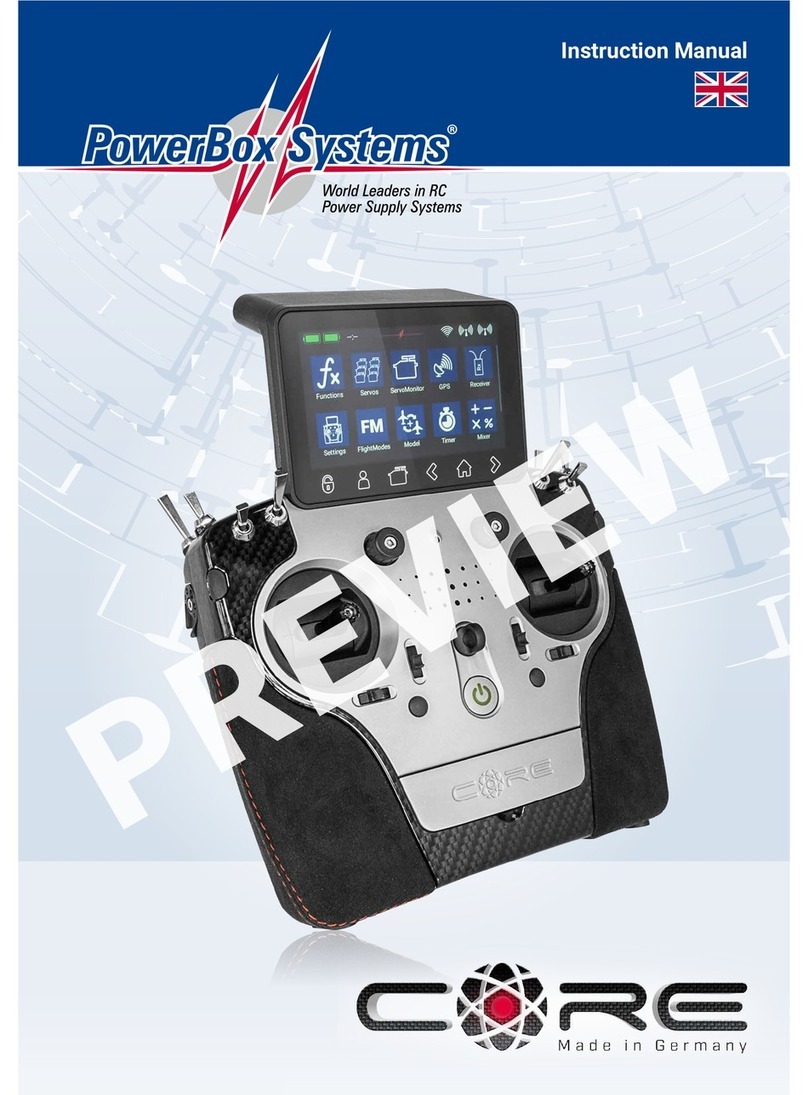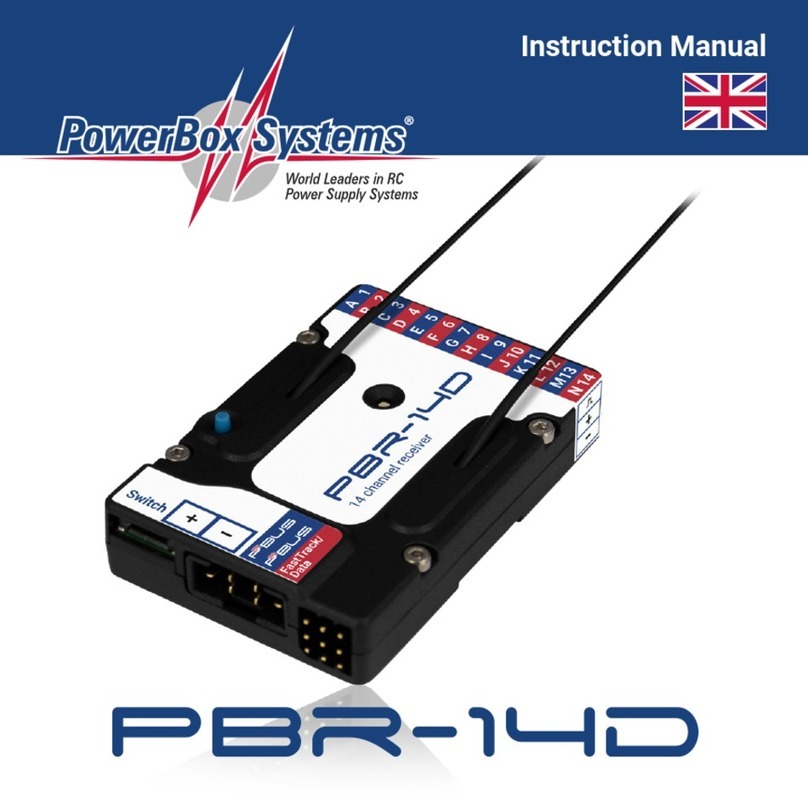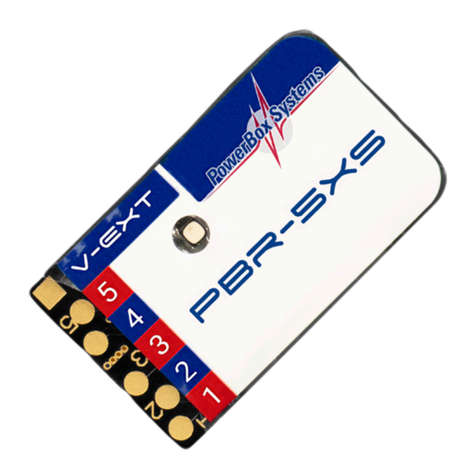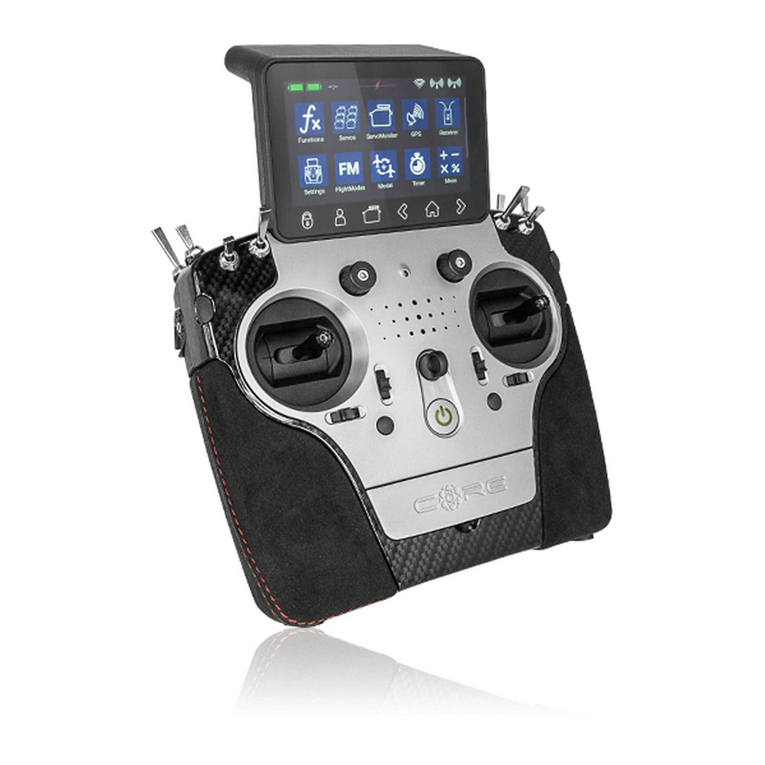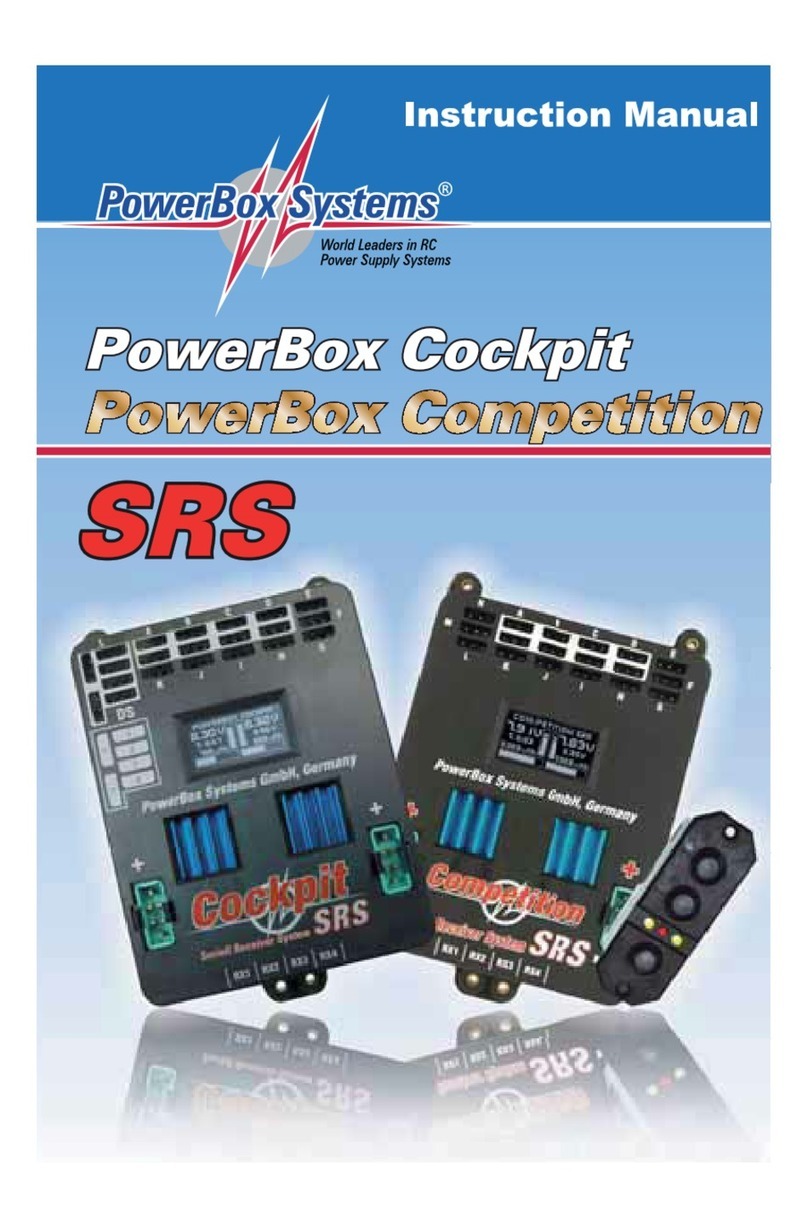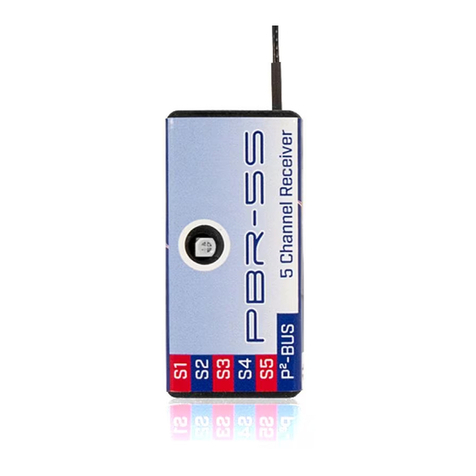
2
PowerBox-Systems − World Leaders in RC Power Supply Systems
Dear customer,
We are delighted that you have decided to purchase a PowerBox transceiver, which almost certainly represents
the most highly developed and most advanced transmitting and receiving system for your valuable models avai-
lable anywhere in the modelling world. Unprecedented range in the 2.4 GHz band, and ultra-fast, ultra-precise
data transfer in both directions - these are the outstanding features of this radio system.
1. PRODUCT DESCRIPTION
If you study the specications closely, it is clear that PowerBox receivers are by no means “receivers” in the usual
sense; they are “transceivers”. They are capable of transmitting and receiving at the same data rate and the same
range as the associated system transmitter.
All PowerBox transceivers feature a radio chip, but an essential difference is the integral pre-amplier, which is
one of the factors which make the system’s extremely long range possible. The PowerBox radio link is a hopping
system which uses at least 66 of 198 possible channels. An intelligent hopping sequence is employed, ensuring
interference-free operation even when the frequency band is heavily used.
The sux D, S/XS or SL indicates the number of radio units installed in the transceiver. The D types PBR-9D and
PBR-26D incorporate two fully independent receive / transmit units.
Other systems feature two aerials, switching between them 50-50, but if one aerial loses the signal, 50% of the
information is inevitably lost; our design does not suffer that drawback. There are also no switching diodes which
have a damping effect on the signal as it arrives; this has a particularly adverse effect on the radio chip.
In contrast, both the receive units in PowerBox transceivers pick up the data packet in undamped form, and sub-
ject it to a full analysis. If one of the two packets contain errors, or if the signal strength is poor, or if the signal is
completely absent, the data packet picked up by the other receive unit is used, and passed to the servo outputs
or digital outputs. The result is a 100% signal even if one aerial is completely blocked.
As of software version 3.5 it is possible to connect a supplementary receiving unit, such as the PBR-26, to the
FastTrack socket of receiver types PBR7, PBR9 and PBR10. If the primary receiver should receive no data from
its integral aerials, the gap is lled seamlessly with the data from the “satellite receiver”.
A further important feature is the integral iGyro system. The PBR-7S, PBR-9D,PBR-10SL and PBR-26D receivers
have the iGyro software installed as standard, providing control of six separate axes. To make use of the iGyro
all you have to do is connect an iGyro SAT to the FastTrack socket. If the integrated iGyro detects a GPSIII or a
PBS-TAV sensor on the P²-BUS, the gyro gain is even speed-compensated!
All iGyro settings can be adjusted conveniently from the transmitter using the Telemetry menu.
All PBR receivers are capable of generating various BUS signals at the FastTrack socket, in order to maintain
compatibility with third-part products such as helicopter gyros. In addition to S.BUS and SRXL, as of Version 3.5
an analogue PPM signal can also be available.
One feature which is unique in the market is the facility to update receivers from the transmitter. You do not even
need to remove the receiver or receivers from the model, or connect to the model using a laptop and USB inter-
face, in order to update the receiver software.
